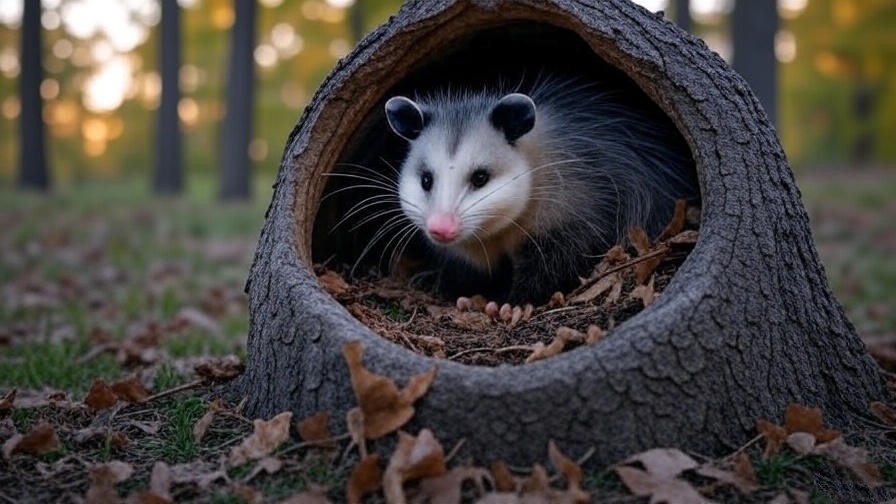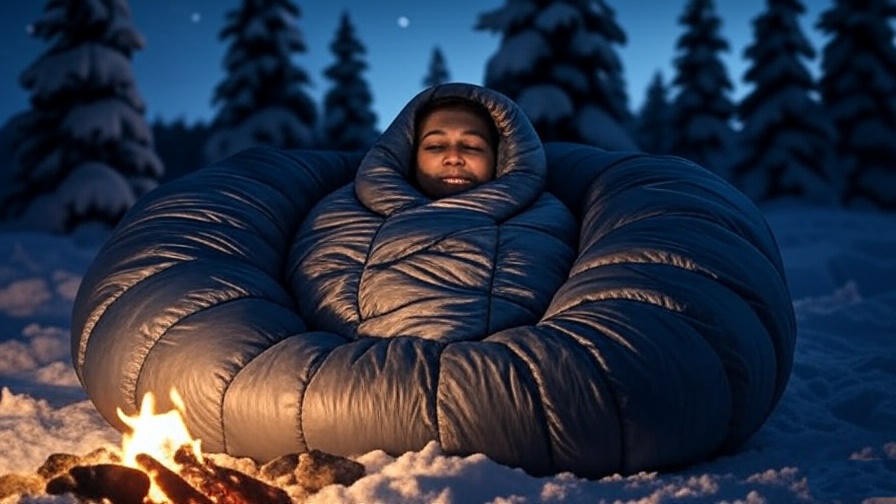Picture this: you’re sipping tea in your backyard at dusk, enjoying the calm of nature, when a rustling in the bushes reveals a possum’s beady eyes glinting in the fading light. By morning, it’s gone, leaving you wondering, where do possums sleep? This question intrigues homeowners, gardeners, and wildlife enthusiasts alike, as these nocturnal creatures seem to vanish into thin air during the day. Understanding where possums sleep not only satisfies curiosity but also helps you create a harmonious backyard that supports both wildlife and your well-being. As someone who has lived in areas teeming with possums and consulted with wildlife experts, I’ll guide you through their cozy hideouts, offering practical tips to coexist peacefully. This knowledge fosters a balanced ecosystem, aligning with the principles of holistic living and mindfulness that enhance your outdoor sanctuary.
What Are Possums? A Quick Overview
Possums vs. Opossums: Clarifying the Difference
The terms “possum” and “opossum” are often used interchangeably, but they refer to different animals. In North America, the Virginia opossum (Didelphis virginiana) is the species you’re likely encountering in your backyard. Possums, on the other hand, are native to Australia and include species like the common brushtail possum. For this article, we’ll focus on the Virginia opossum, as it’s the most relevant for U.S. readers curious about local wildlife. These nocturnal marsupials are known for their adaptability, thriving in both rural and urban environments. Their sleeping habits are a key part of their survival strategy, making the question of where they rest during the day both fascinating and practical.
Why Understanding Possum Behavior Matters
Knowing where possums sleep helps you understand their behavior and role in your backyard ecosystem. Opossums are nature’s cleanup crew, eating pests like ticks, rodents, and garden insects, which can reduce the need for chemical pest control—a win for holistic living. However, their presence can also lead to conflicts, such as nesting in unwanted areas like attics or sheds. By learning about their habits, you can create a backyard that supports wildlife while maintaining a peaceful, mindful outdoor space. This aligns with the principles of holistic well-being, where harmony with nature enhances relaxation and mental clarity.
Where Do Possums Sleep? Exploring Their Cozy Hideouts
Natural Sleeping Spots
In the wild, possums seek out safe, secluded spots to sleep during the day. Tree hollows are a favorite, offering protection from predators like owls and foxes while providing insulation from weather extremes. According to Dr. Jane Wilson, a wildlife biologist with over 20 years of experience studying marsupials, “Opossums prefer tree cavities because they’re naturally secure and maintain stable temperatures.” When hollows aren’t available, possums may build leaf nests in dense foliage, weaving together twigs and leaves for a temporary bed. In rural areas, they might also use burrows abandoned by other animals or tuck into rock crevices. These natural dens reflect their instinct to stay hidden and safe while resting.
Urban Hideouts
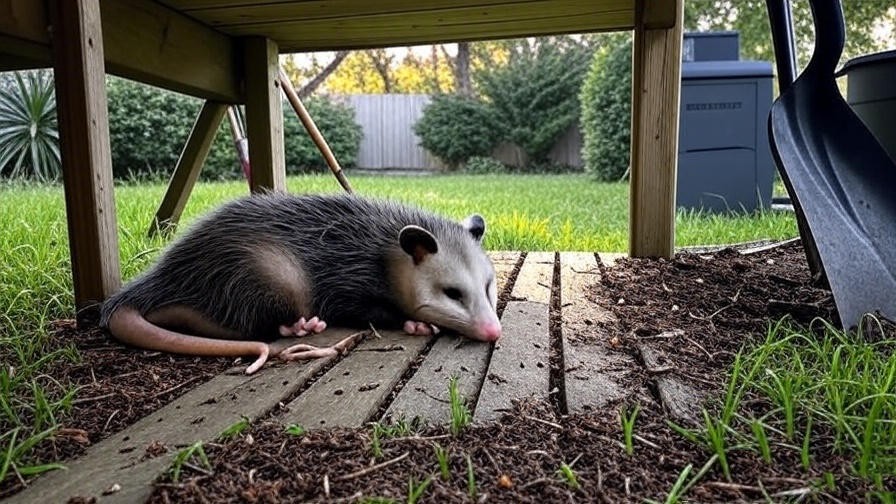
In cities and suburbs, possums adapt to human environments with remarkable ingenuity. Attics, sheds, and garages are prime sleeping spots, offering shelter and warmth. A homeowner in suburban Ohio once shared with me how they discovered a possum nesting in their garage, curled up in a pile of old blankets. Under decks or porches are also common, as these spaces mimic the enclosed safety of natural dens. Less frequently, possums may sleep in abandoned vehicles, woodpiles, or even unused garden equipment. These urban hideouts highlight their opportunistic nature, choosing locations that are quiet, dark, and close to food sources like compost bins or pet food left outdoors.
Seasonal Variations in Sleeping Habits
Possum sleeping habits shift with the seasons. In winter, they seek insulated spots like attics or dense leaf nests to stay warm, especially in colder climates. During summer, they may opt for breezier locations, such as high tree branches, to stay cool. Food availability also influences their choices—abundant food in fall might lead them to sleep closer to gardens, while scarce resources in winter push them toward human structures. Understanding these patterns helps you anticipate where possums might appear in your backyard and plan accordingly.
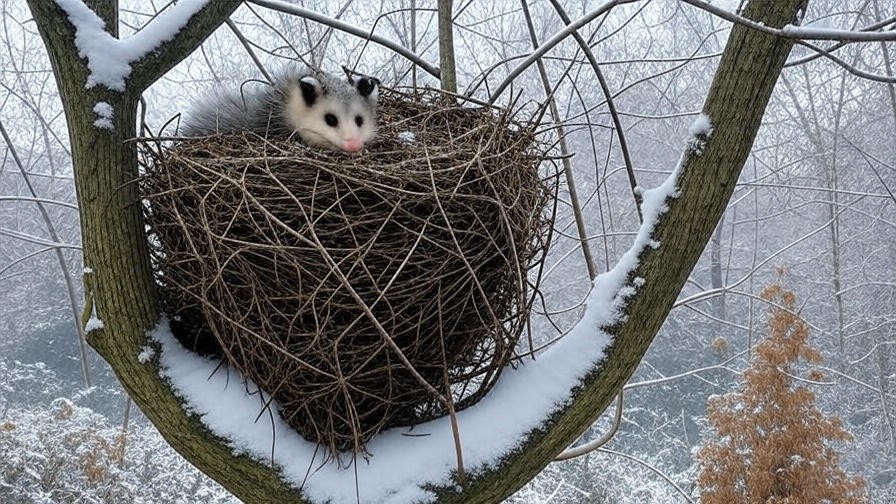
Why Do Possums Choose These Sleeping Spots?
Safety and Security
Possums are prey for larger animals, so their sleeping spots prioritize safety. Elevated locations like tree hollows or attics keep them out of reach from ground-dwelling predators. Enclosed spaces, whether natural or man-made, provide a barrier against threats. Their preference for secluded dens also reduces human encounters, which they instinctively avoid despite their adaptability to urban life.
Comfort and Temperature Regulation
Comfort is key for possums, especially during extreme weather. In colder months, they pile leaves, grass, or even scavenged fabric into their nests for insulation. In hot weather, they choose airy spots to prevent overheating. This adaptability ensures they maintain a stable body temperature while sleeping, which is critical for their survival as they don’t truly hibernate.
Proximity to Food Sources
Possums are opportunistic feeders, so their sleeping spots are often near reliable food sources. Gardens, compost piles, and unsecured trash cans are magnets for possums, which is why urban nests are commonly found near these areas. To reduce unwanted visitors, secure food sources by using tight-fitting lids on bins and harvesting ripe fruit promptly.
How Possum Sleeping Habits Affect Your Backyard
The Ecological Role of Possums
Possums are unsung heroes of the ecosystem. A single opossum can consume thousands of ticks per season, reducing the risk of Lyme disease. They also eat slugs, snails, and small rodents, naturally controlling garden pests. However, they may nibble on fruit or vegetables, which can frustrate gardeners. Balancing their benefits with potential drawbacks is key to harmonious coexistence.
Creating a Possum-Friendly Backyard
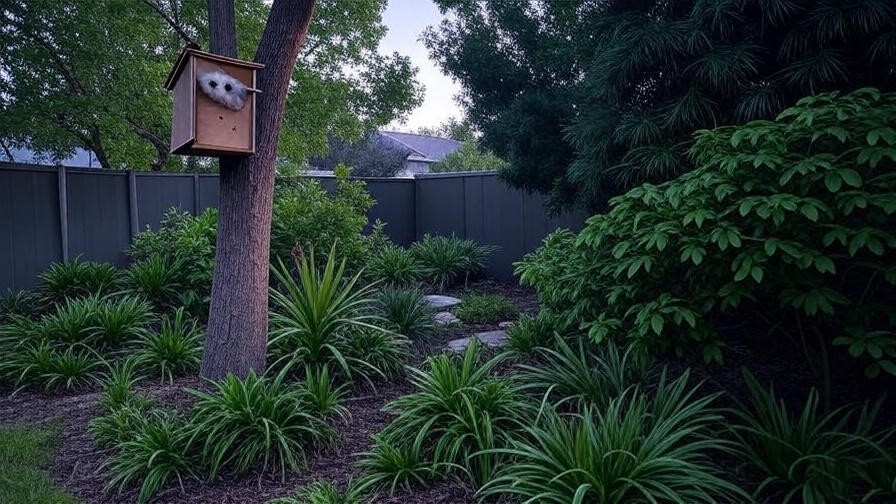
To encourage possums to sleep in safe, non-disruptive areas, consider installing a possum box—a wooden shelter mimicking a tree hollow. Place it high in a tree or on a pole to attract possums away from your attic. Planting native trees like oaks or maples provides natural nesting sites and enhances your backyard’s ecosystem. To deter possums from unwanted areas, seal entry points to sheds or crawl spaces and use motion-activated lights, which startle these nocturnal creatures without harm.
Connection to Holistic Well-Being
A possum-friendly backyard aligns with holistic well-being by fostering a connection to nature. Watching wildlife from your porch can be a meditative practice, grounding you in the present moment. A balanced ecosystem also reduces the need for chemical interventions, creating a healthier outdoor space for relaxation and mindfulness. By understanding possum habits, you cultivate a sanctuary that benefits both you and the wildlife sharing your space.
Practical Tips for Coexisting with Possums
Preventing Unwanted Nesting
To keep possums from setting up camp in undesirable areas like your attic or garage, take proactive steps. Secure garbage bins with tight-fitting lids to eliminate easy food sources. Compost piles should be enclosed or turned regularly to reduce their appeal. Seal entry points to buildings by checking for gaps under eaves, vents, or foundations—opossums can squeeze through openings as small as four inches. Motion-activated sprinklers or lights are effective, non-harmful deterrents, as possums prefer to avoid sudden disturbances. A neighbor of mine successfully kept possums out of their shed by installing a bright motion-sensor light, which sent the nocturnal visitors scurrying without causing harm.
Encouraging Safe Possum Habitats
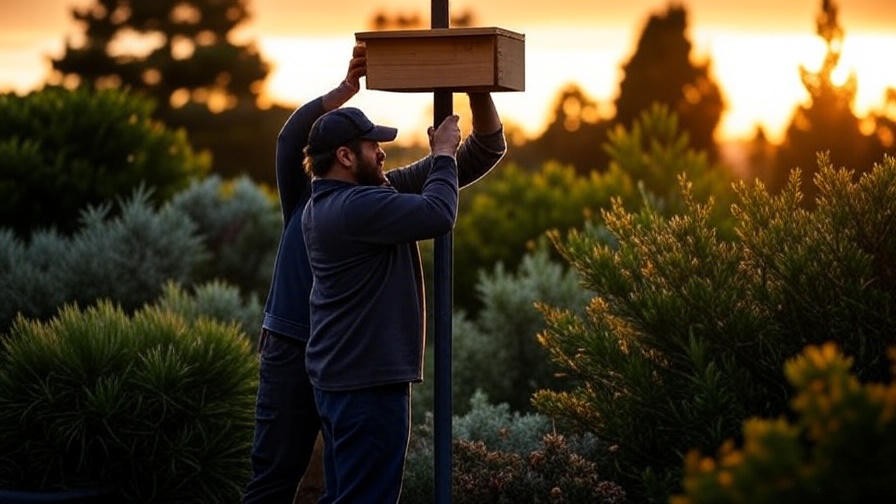
If you want to support possums while keeping them away from your home, create alternative sleeping spots. Possum boxes, similar to birdhouses but larger and with a wider entrance, can be mounted in trees or on poles. These mimic natural tree hollows and are especially effective in urban areas with few mature trees. Planting native species like dogwood or pine provides natural cover and nesting opportunities, enhancing your backyard’s biodiversity. Leaving a small, undisturbed corner of your yard with dense shrubs or a brush pile can also attract possums to sleep there instead of under your deck. These efforts align with holistic living by fostering a wildlife-friendly environment that promotes balance and tranquility.
What to Do If You Find a Possum Nest
Discovering a possum nest in your attic or shed can be startling, but avoid panicking. First, confirm the nest is active by looking for signs like fresh droppings or nesting materials. Never attempt to remove a possum yourself, as they may hiss or play dead when threatened, and females may have joeys in their pouch. Instead, contact a local wildlife rescue organization for guidance. If relocation isn’t necessary, gently encourage the possum to leave by making the area less appealing—leave lights on, play a radio softly, or place ammonia-soaked rags nearby (a smell possums dislike). A wildlife rehabilitator I spoke with emphasized, “Patience is key; possums will often move on if their den feels unsafe.” Always check local regulations before taking action, as some areas protect opossums as beneficial wildlife.
Common Myths About Possum Sleeping Habits
Myth: Possums Sleep Hanging by Their Tails
One of the most persistent myths is that possums sleep upside down, hanging by their prehensile tails. While their tails are strong enough for grasping branches or balancing, they don’t use them for sleeping. Opossums prefer stable, secure dens where they can curl up safely. This misconception likely stems from their arboreal cousins in Australia, but for North American opossums, a cozy nest is far more practical.
Myth: Possums Are Always a Nuisance
Many people view possums as pests, but this overlooks their ecological value. By consuming ticks, insects, and small rodents, possums help maintain a healthy backyard. While they may occasionally raid gardens or trash cans, these issues can be managed with simple precautions like securing food sources. Viewing possums as allies rather than adversaries encourages a more mindful approach to sharing your space with wildlife.
Myth: Possums Hibernate
Unlike true hibernators like bears, possums remain active year-round. In colder climates, they may reduce activity and spend more time in insulated dens, but they don’t enter a deep hibernation state. Instead, they adapt by choosing warmer sleeping spots, such as attics or dense leaf nests, and foraging during milder nights. Understanding this helps you anticipate their behavior in winter and take steps to manage their presence.
FAQs About Where Possums Sleep
Do Possums Sleep in the Same Place Every Day?
Possums are nomadic by nature and often rotate between multiple dens. They may return to a favorite spot, like a tree hollow or attic, but rarely stay in one place indefinitely. This behavior helps them avoid predators and maintain flexibility in response to food availability or weather changes. If you notice a possum repeatedly using your property, it’s likely due to a nearby food source or a particularly cozy den.
Are Possum Nests Dangerous for Humans?
Possum nests themselves pose minimal risk, but they can attract fleas or other parasites. To stay safe, avoid direct contact with nesting materials and clean any droppings with gloves and a mask. If a nest is in an enclosed space like an attic, ventilate the area and sanitize it after the possum leaves. Regular yard maintenance, like clearing debris, reduces the likelihood of nests becoming a health concern.
How Can I Tell If a Possum Is Sleeping in My Yard?
Signs of a possum nest include small, dark droppings, disturbed foliage, or nesting materials like leaves and twigs piled in a secluded spot. You might hear rustling or soft vocalizations at night, as possums are active after dark. Check under decks, in woodpiles, or inside sheds for these clues. A trail camera can confirm their presence without disturbing them.
Can I Attract Possums to Sleep in a Specific Area?
Yes, you can encourage possums to sleep in designated areas by providing possum boxes or leaving a natural, undisturbed corner of your yard. Avoid leaving out food, as this can attract other unwanted animals like raccoons. Instead, focus on creating safe, sheltered spaces with native plants or brush piles. This approach supports possums while keeping your property tidy and balanced.
Conclusion
Understanding where possums sleep unlocks the secret to coexisting with these fascinating creatures. From tree hollows and leaf nests to urban hideouts like attics and sheds, possums choose their dens based on safety, comfort, and proximity to food. By recognizing their habits, you can create a backyard that supports both wildlife and your holistic well-being. Install possum boxes, secure food sources, and embrace their ecological benefits to foster harmony. This knowledge not only answers a curious question but also transforms your outdoor space into a mindful sanctuary where nature and relaxation thrive. Have you spotted possums in your yard? Share your experiences in the comments, or explore our articles on backyard ecosystems and mindful living for more ways to connect with nature.

